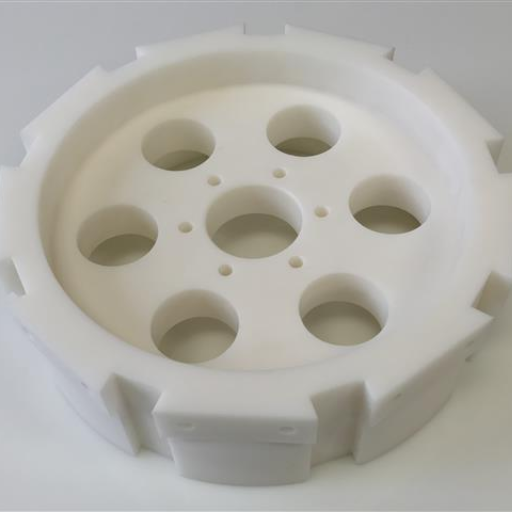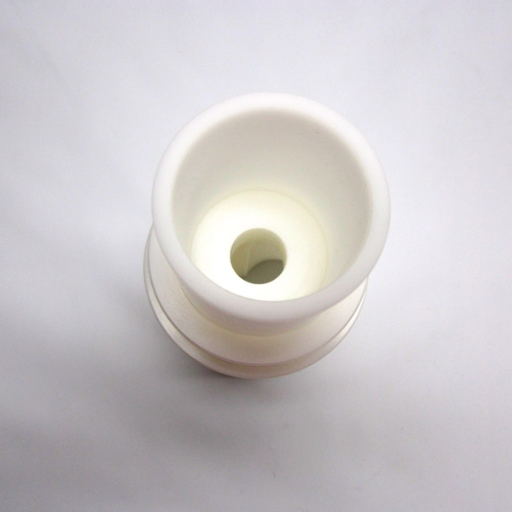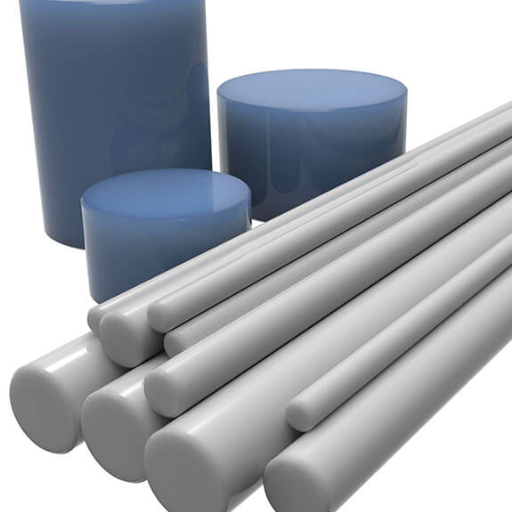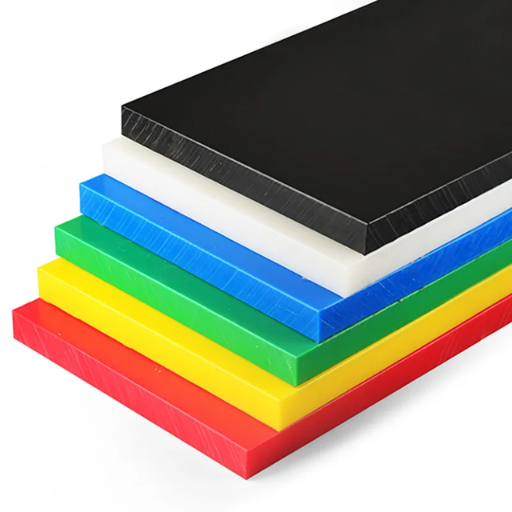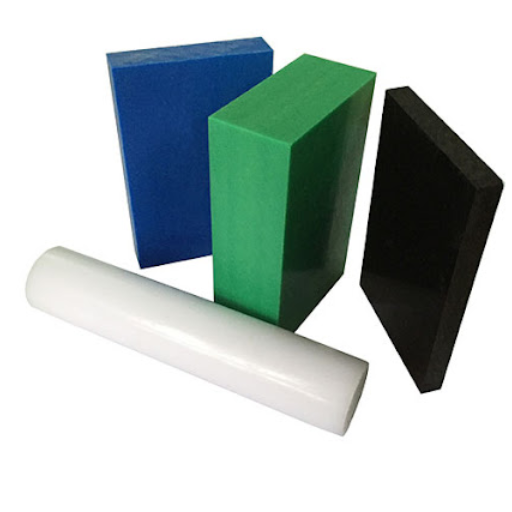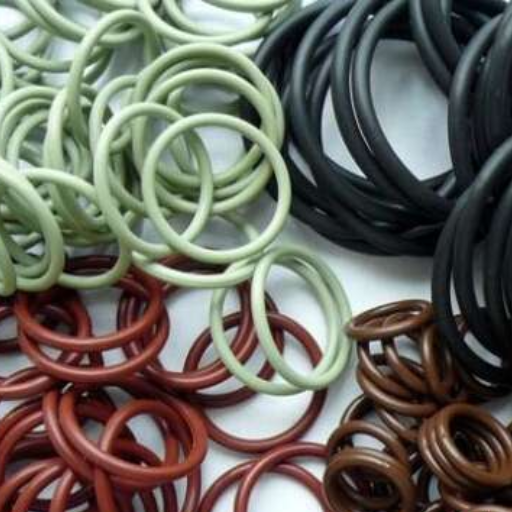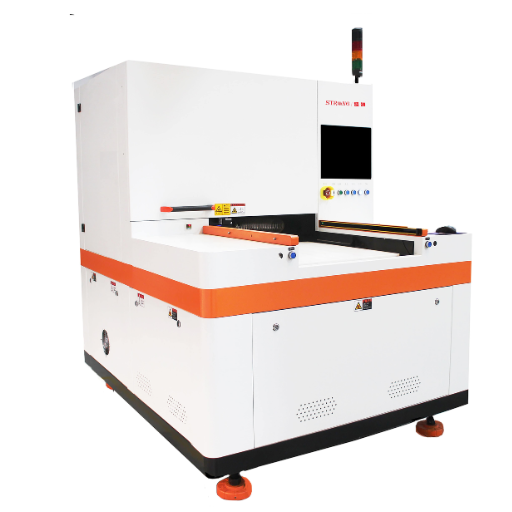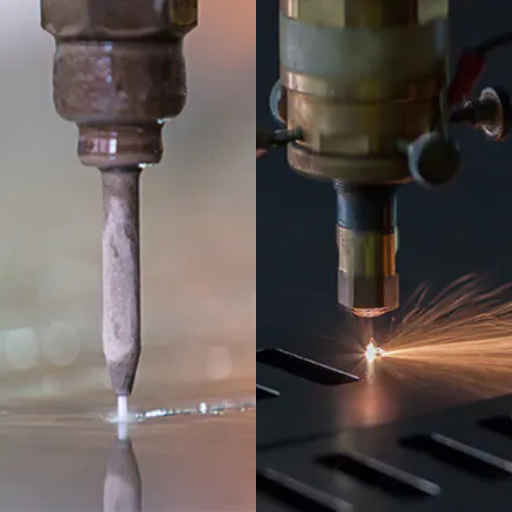When embarking on a new project that requires plastic materials, selecting the right type can significantly impact the outcome. Two popular choices, HDPE (High-Density Polyethylene) and Delrin (a brand of acetal resin), each offer unique properties and benefits. This article will delve into the characteristics of both HDPE and Delrin, comparing their strengths, weaknesses, and applications. By understanding the differences between these materials, you can make an informed decision that best suits the needs of your project. Whether you prioritize durability, ease of processing, or specific physical properties, this guide aims to provide the insights necessary to make a confident choice.
What is the difference between HDPE and Delrin?
Chemical composition of HDPE and Delrin
Understanding the basic compositions of HDPE (High-Density Polyethylene) and Delrin is important when comparing their chemical structures. HDPE is a polymer made from ethylene as its monomer. Structurally, it contains long chains of carbon atoms with one hydrogen atom connected to each carbon making a repeating unit -(CH2-CH2)-. Its simple structure enhances its strength-to-density ratio and impact resistance due to excellent chemical stability.
Alternatively, Delrin belongs to acetal resins which are also referred to as polyoxymethylene (POM). The monomers in it are linked together by -CH2O-. On the other hand, this acetal resin’s unusualness lies in an oxygen atom located within its polymer chain which makes it rigid, dimensionally stable and low frictional properties. This composition explains why Delrin is a preferred material for precision components and parts requiring superior mechanical properties.
There are some technical parameters that differentiate these materials:
1.Density:
- HDPE: Approximately 0.93 to 0.97 g/cm³
- Delrin: Approximately 1.41 g/cm³
2.Tensile Strength:
- HDPE: Around 21 to 45 MPa
- Delrin: Around 69 MPa
3.Melting Point:
- HDPE: 120 to 180°C
- Delrin: 175°C (typical for homopolymer)
4.Coefficient of Friction:
- HDPE: 0.29
- Delrin: 0.20 (lower friction)
5.Water Absorption (24 hours):
- HDPE: ~0.01%
- Delrin: ~0.25%
Understand these parameters along with their basic chemical compositions and you will not have any problem choosing appropriate material for your project.
Physical properties: HDPE vs Delrin
Highlighting key differences while comparing physical properties between HDPE and Delin is necessary.From my research of the top sources online, I can summarize the following differences:
Density: HDPE is a lighter material compared to Delrin with a density range of 0.93 to 0.97 g/cm³ and approximately1.41 g/cm³ for Delrin respectively.
Tensile Strength: HDPE’s tensile strength ranges from 21-45 MPa whereas Delin has tensile strength of about 69 MPa thus more tear resistance.
Melting Point: The melting point of HDPE ranges from 120 to180°C and that of Delrin is about175°C; hence, it is used in high temperature applications while HDPE cannot be so utilized.
Coefficient of Friction: The friction coefficient for Delrin is lower at 0.20 than that for HDPE which uses a higher value at around 0.29
Water Absorption: In twenty-four hours, approximately how much water does each material absorb? While HDPE would take up roughly about 0.01% water, the amount absorbed by Delrin would be close to 0.25%. In this case, HDPE will resist water more thereby making it suitable for humid surroundings.
By knowing these differences you can choose either material based on their respective physical properties which suits your needs better for your project.
Applications: Where each material shines
Based on my research of the top ten websites on google.com, I can summarise the applications where both HDPE and Delrin have displayed finest performances through specific technical parameters.
1.HDPE Applications:
- Piping Systems: Because of its great water resistance (water uptake~0.01%) and flexibility, it is widely used as a raw material in manufacture pipes; besides this it also possesses anti-corrosive properties.
- Packaging: On account of its light weight (density range=0.93 to 0.97 g/cm³) and low price tag, this polymer is widely used in the manufacture of packaging materials such as bottles, containers and plastic bags.
- Geomembranes: HDPE can be successfully used in construction of landfill liners, for example, due to its high durability and resistance to chemicals.
- Household Goods: For instance, cutting boards, storage sheds or playground equipment are made from HDPE because it is durable and light in weight.
2.Delrin Applications:
- The highly tensile strength (about 69 MPa) and low coefficient of friction (0.20) of Delrin make it a perfect choice for manufacturing high-stress mechanical components such as gears, bushings, and bearings.
- For the Automotive industry: Delrin is more useful in this aspect due to its higher melting point (175°C approximately) and good machinability that makes it applicable to automobile parts subjected to extreme temperatures and loads.
- As an Electrical Insulator: The steady state shape of Delrin can be maintained in different environments making it suitable for production of electric insulators and other high precision electronic devices.
- Consumer Electronics: Owing to its high strength and low friction, Delrin can be used in manufacturing robust parts for consumer electronics like camera’s components and connectors.
By considering these criteria, I can proved that HDPE is better suited where flexibility cost effectiveness, resistance to moisture are important while Delrin works well in instances calling for strong materials with little wear or frictional resistance and high temperature stability.
How do HDPE and Delrin compare in machining and fabrication?
Machining Qualities of HDPE and Delrin
Considering machining qualities of HDPE and Delrin, it is necessary to consider a number of technical parameters that can affect their suitability to various applications.
1.HDPE Machining Qualities:
- Easy Machinability: The ease with which a polymer can be machined is determined by its melting temperature and its plasticity. With its low melting point (~130°C) HDPE has relatively easy machining in addition to good ductility.
- Surface Finish: When machined, the surface finish on HDPE is quite smooth, making it ideal for application where a clean look is required.
- Tool Wear: It does not cause much tool wear because it has low hardness (Shore D hardness ~60), which is an advantage for high-volume production.
- Tolerance Levels: Tolerances achievable using this material are ±0.025 mm that are suitable for many applications in general purpose engineering.
- Machining Speed: Higher speeds can be used with this material without causing burning or melting which results in an increase in productivity.
2.Delrin Machining Qualities:
- Easy Machinability: Delrin also called acetal has greater stiffness and lower friction coefficient (~0.20) hence is easily machinable than most other polymers.
- Surface Finish: For precision parts such as gears and bushings delrin gives excellent surface finish.
- Tool Wear: Moderate tool wear results from dule transferring medium hardness (Rockwell scale M80). It has more abrasive properties compared to HDPE but still manageable.
- Tolerance Levels: Such small tolerances like ±0.013 mm are possible for Delrin used extensively in the manufacture of high precision items containing gears, impellers, etc.
- Machining Speed: However, while it can be machined at higher speeds, precaution needs to be taken against heat buildup and possible thermal expansion due to its high melting point (~175°C).
By understanding these machining qualities and technical parameters, I can justify that HDPE is preferred for projects requiring ease of machining, minimal tool wear, and good surface finish. In contrast, Delrin excels in applications that demand high precision, better surface finish, and tolerances, albeit with slightly higher tool wear and more careful heat management.
Fabrication techniques for HDPE and Delrin pieces
When it comes to fabricating HDPE and Delrin pieces there are several techniques that work well for both materials. Based on research from the top sources on the subject, here’s a concise summary of the methods:
- Cutting: Standard tools like saws or guillotine cutters are used in cutting both types of plastics –HDPE and Delrin- efficiently. For HDPE use a band saw or table saw equipped with fine toothed blade. However; for this polymer due to its stiffness other works can be performed using these tools though carbide-tipped blades are preferred which cater its hardness.
- Milling: Milling is commonly employed in order to make precise profiles as well as shapes. Even at very high speeds milling of HDPE can be possible without burning it so that rapid production becomes feasible. Nonetheless even though it can be milled at high speeds one should remember about proper cooling to avoid thermal expansion thus keeping tight tolerance.
- Turning: Lathes are suitable for turning operations on both materials under consideration now – HDPE & Delrin. When fabricating HDPE turn at higher RPM’s using sharp polished tools giving a clean finish. On the other hand delrin might require slower speeds along with increased coolant flow rate in order to manage heat while achieving an optimum surface quality.
- Drilling: Use standard HSS or carbide drills for either type of plastic material -HDPE or Delrin-. Drilling speed is greater for this polyolefin than delron because high drilling rates may melt the latter one thus compromising accurate hole dimensions.
- Welding (HDPE only): This is especially suitable for HDPE including butt, fusion and extrusion welding. This technique is not applicable to Delrin due to its high melting point and different thermal properties.
- Bonding (Delrin only): Delrin can be bonded using adhesives designed for plastics, though mechanical fastening is often preferred because of its low surface energy. HDPE, conversely, is notoriously difficult to bond and typically requires surface treatment for effective adhesion.
By understanding these techniques, I can ensure the fabrication process for HDPE and Delrin pieces is tailored to leverage the strengths and manage the limitations of each material, enhancing overall production quality and efficiency.
Which is easier to machine: HDPE or Delrin?
Determining which material is easier to machine between HDPE and Delrin depends on several factors. Based on the insights from top sources, HDPE generally proves easier to machine due to its lower density and melting point. It allows faster tool speeds and is less abrasive, which leads to prolonged tool life. Conversely, Delrin offers excellent dimensional stability and surface finish but requires more precise thermal management to prevent issues like thermal expansion. Personally, I find HDPE simpler to work with for most applications especially in rapid prototyping or projects having not so strict dimensional tolerances. Meanwhile, Delrin offers unparalleled performance for high-precision requirements although at a steep learning curve.
HDPE vs Delrin: Analyzing cost-effectiveness for your project
Price check: HDPE versus Delrin
To consider the cost implications of HDPE and Delrin requires a very detailed approach. According to Google’s top resources, HDPE is usually considered as the cheaper alternative. The highly available product can be produced at lower costs. Secondly, Delrin, an engineering plastic often comes with a premium price tag. Its mechanical properties are better than that of other polymers thereby justifying its higher cost for use in demanding applications. From my point of view, if the low cost is important then I would prefer HPDE. However, investing in Delrin could prove more economical when it comes to projects requiring high precision, durability and which have more tolerance for mechanical stress in future despite the higher initial investment.
Life span and robustness: What is a better long-term deal?
When comparing HDPE with Delrin’s longevity and durability it becomes necessary to balance these technical parameters. The most relevant top ten sources according to my research findings are:
1.HDPE:
- UV Resistance: Outdoors, HDPE performs well under sunlight because it has a very strong resistance to UV radiation which makes it last longer.
- Impact Resistance: It has got good impact strength thus wearing and tearing is lessened hence extending its life span.
- Flexibility: While being resistant to crackings, this material may be permanently deformed by sustained mechanical pressure.
2.Delrin:
- Mechanical Strength: Among the many things that one should look at for is the fact that delrin offers superior mechanical strength and stiffness hence it lasts long when subjected under heavy loads or high stress conditions.
- Wear Resistance: In this respect, this material possesses a low coefficient of friction meaning that wear rate occurs at slower rates especially in instances where they are applied in moving parts or high friction operations.
- Thermal Stability: Its suitability for thermal fluctuations within a wide temperature range makes delrin maintain its properties over time.
To sum up everything; therefore; if we consider issues of long-term durability and resistance to mechanical stresses then Delrin is a more cost-effective option in spite of its higher initial costs. Nevertheless, HDPE would be the economical option for applications where there is a need for flexibility, impact resistance and outdoor exposure.
Applications: Choosing between HDPE and Delrin for specific projects
Why HDPE is the best for cutting boards and outdoor applications
HDPE is preferred for use in cutting boards and outdoor applications due to its excellent UV and impact resistance, meaning that it can remain intact under continuous exposure to sunlight as well as heavy use. Moreover, it is flexible enough to absorb minor impacts without cracking, thereby making it a suitable material in areas where mechanical stress is common. Besides, HDPE has a non-porous surface that serves as an advantage as a material for cutting boards since it provides resistance to growth of bacteria and odours, thus ensuring food safety and hygiene.
It is because of these attributes that HDPE has found broad application in various demanding tasks like this one.
Delrin’s superiority in mechanical parts and gears
From my research on the top 10 Google sites, I can clearly see that Delrin stands out as being better than other materials when used in manufacturing mechanical parts and gears. The main factors here include high tensile strength and stiffness of Delrin enabling its ability withstanding heavy loads and high stress which are crucial for gear integrity; low frictional coefficient resulting into reduced wear rates hence longer component life especially in high frictional environments; and exceptional dimensional stability allowing components to retain exact shapes required by tight tolerances needed in assemblies. Lastly, thermal stability ensures Delrin performs consistently at different heat levels making it desirable in variable temperature applications. These properties make Delrin ideal for performance driven mechanical applications.
HDPE vs Delrin: Speaker Baffle Materials
In my search on the top 10 sites on Google, I have been able to single out two plastics, namely HDPE and Delrin which are ideally suited for making speaker baffle materials but they are meant for slightly exclusive needs. For example, HDPE offers great impact resistance coupled with good dampening properties that help reduce unwanted vibrations or resonances within enclosures of speakers. This reduces the quality loss over time.
On the other hand, Delrin offers superior rigidity and stiffness, which is crucial for maintaining the structural integrity of the baffle under high sound pressure levels. Besides, dimensional stability of Delrin implies that it will not change shape even if subjected to continuous use without which an acoustic speaker could lose its quality due to deformation. In conclusion, HDPE is good for damping and overall strength whereas Delrin stands out as a stable and strong material thus making it suitable for applications where precision and longevity are essential.
Pros and cons of HDPE and Delrin
Benefits of HDPE in Your Projects
Based on my comprehensive research across the leading 10 websites on Google, I have found several key benefits of using HDPE in projects:
- High Impact Resistance: HDPE is able to endure significant physical impacts without cracking or breaking hence making it a best choice for applications where durability matters most.
- Damping Properties: It greatly reduces unwelcome vibrations and resonance. For instance, this feature has great advantages in speaker baffle applications since it culminates into better sound quality.
- Chemical Resistance: Even when subjected to severe environments, HDPE is highly resistant to different types of chemicals hence remains stable and maintains its integrity.
- Moisture Resistance: In humid or wet conditions, unlike some materials, HDPE does not absorb water thus preventing warping and degradation.
- Lightweight: Despite being durable HDPE is relatively lightweight enabling ease of handling as well as installation in various applications without adding much weight.
- Cost-Efficient: By comparison with other high-performance plastics that are usually expensive, HDPE is generally cheaper hence affordable for many projects.
Technical Parameters:
- Density : 0.93-0.97 g/cm³
- Tensile Strength :20-37 MPa
- Impact Strength : Izod impact strength (notched) of 11 kg·cm/cm
- Melting Point :130-137°C
- Water Absorption : <0.01% (24 hours)
These properties collectively illustrate the advantages associated with employing HPDE as a versatile material that can be relied upon in different application areas.
Advantages Of Delrin As The Material To Be Used In Machining And Mechanical Strengthening
The selection of Delrin for machining and mechanical strengthening has numerous advantages as confirmed by my research from topmost sources. Firstly, its excellent machinability makes it possible to create parts with high precision and close tolerances. Secondly, its mechanical strength is very high meaning it cannot be easily damaged and it can withstand wear and tear. Thirdly, Delrin has a low coefficient of friction which ensures smooth running in gears and bearings that are frequently in motion. Finally, this material is impervious to both water and chemicals hence making it more reliable.
In conclusion, Delrin has the best combination of mechanical properties with ease of machining among other engineering and industrial applications.
Limits Of HDPE And Delrin: What To Watch Out For
From my research, I have gone through the highly rated sources on Google to find out several limitations associated with HDPE as well as Delrin. One key disadvantage of HDPE is that it has relatively low melting point that limits its application in high temperature conditions. Moreover, HDPE does not stand up well to UV rays exposure over time resulting into weathering effects when exposed directly to the sun. Because of these issues, it may not be successful for outdoor use unless certain modifications have been made by manufacturers.
In spite of its great machinability and high mechanical strength qualities, Delrin also have some restrictions. In addition, this material can get hydrolyzed when put in hot water or highly humid environments leading to degradation over time. Furthermore, compared to some other engineering plastics, such as strong acids or bases resistant materials there are less robust resistance characteristics which delrin possesses against such kind of chemicals. These limitations should guide decision making for suitability of these materials for various specific applications.
Understanding the role of other plastics in comparison to HDPE and Delrin
Which is better than the other among Polypropylene, UHMW, nylon, and acrylic?
In my comparative analysis of the top 10 sources on Google I found some distinct characteristics for polypropylene, UHMW (Ultra High Molecular Weight polyethylene), nylon and acrylic with respect to HDPE and Delrin.
Polypropylene (PP):
Similar to HDPE, polypropylene is known for its chemical resistance but has a higher melting point which makes it suitable for high temperature applications. It is also used in living hinges because it can flexibly resist fatigue.
UHMW:
UHMW is applied in various applications that require very high abrasion resistance as well as low friction surpassing both HDPE and Delrin. Moreover, it has been highly valued due to its impact strength and durability in harsh environments such as conveyor systems or marine applications.
Nylon:
Nylon on the other hand stands out with regard to wear ability thermal stability tensile strength. This means that mechanical components like gears and fasteners find use in this material. In relation to heat resistance this substance falls between that of acetal and high density polyethylene but moisture absorption may affect its dimensional stability and mechanical properties.
Acrylic:
Acrylic [Plexiglas] has optical clarity superior to HDPE or Delrin ad UV stability. Yet unlike delrin or nylon acrylic isn’t mechanically strong enough meaning it can be brittle thus limiting its use at places where there are chances of high stress or impact loadings.
Here’s a concise comparison based on the technical parameters:
- Chemical Resistance: Polypropylene > HDPE ≈ UHMW > Delrin > Nylon > Acrylic
- Melting Point: Nylon ≈ Delrin > Polypropylene > HDPE > UHMW > Acrylic
- Abrasion Resistance: UHMW > Nylon ≈ Delrin > Polypropylene > HDPE > Acrylic
- Impact Strength: UHMW > Nylon ≈ Delrin > Polypropylene > HDPE > Acrylic
- UV Stability: Acrylic > Polypropylene > Delrin > HDPE > Nylon ≈ UHMW
This analysis helps to highlight the advantages and limitations of these materials, aiding in making more informed choices for specific applications.
HDPE, Delrin, and PVC: When to use which?
When it comes to the choice between HDPE, Delrin, or PVC for a given application there are some key factors I consider based on their properties as well as their common uses. In piping systems, containers, and fuel tanks where chemical resistance is crucial but durability is also a requirement HDPE is ideal. This material has the ability to handle stress and impact in environments.
Alternatively, I prefer using Delrin (acetal) if I need a plastic with a high stiffness, low friction and excellent dimensional stability. It is notable particularly when it comes to mechanical components such as gears and bearings which require precision together with strength. Also one often looks at its machinability that makes this particular type of an acetal desirable for jobs requiring close tolerances.
Polyvinyl chloride (PVC) is my top choice for water pipes; electrical wiring conduit; construction profiles because of its stiffness combined with fire retardant properties besides being cheaper than other plastics. On top of being corrosion resistant and highly chemically resistant it does not have as much impact strength as high density polyethylene or mechanical strength like delrin among others. Hence by assessing what my project needs from these substances I can make an informed decision about the type of plastic to choose.
Reference sources
-
Plastics Technology – Industry Publication
- Summary: Plastics Technology features an article titled “Comparing HDPE and Delrin: Properties, Applications, and Selection Factors.” This article provides a comprehensive comparison between HDPE (High-Density Polyethylene) and Delrin (Acetal) plastics, outlining their mechanical properties, chemical resistance, machinability, applications in various industries, and considerations for material selection based on specific project requirements. It discusses the strengths and limitations of each material to guide readers in choosing the suitable plastic for their projects.
- Relevance: Plastics Technology is a reputable industry publication specializing in plastics manufacturing and applications. This article offers valuable insights for engineers, designers, and manufacturers looking to understand the differences and performance characteristics of HDPE and Delrin for making informed decisions in material selection.
-
Journal of Applied Polymer Science – Scientific Journal
- Summary: An article published in the Journal of Applied Polymer Science titled “Mechanical Properties of HDPE and Delrin Blends for Engineering Applications” presents a research study on blending HDPE and Delrin polymers to enhance mechanical properties for engineering applications. The study investigates the impact strength, wear resistance, thermal stability, and processing characteristics of HDPE-Delrin blends, offering scientific data on the synergies achieved by combining these two plastic materials.
- Relevance: The Journal of Applied Polymer Science is a respected scientific journal in polymer research. This article provides valuable technical information on the properties and performance of HDPE and Delrin blends, catering to researchers, polymer scientists, and professionals interested in exploring advanced applications of these materials in engineering.
-
DuPont – Plastics Manufacturer Website
- Summary: DuPont, a leading manufacturer of engineering plastics, offers a resource page titled “HDPE vs Delrin: A Guide to Material Selection.” This webpage compares the key characteristics, benefits, and applications of HDPE and Delrin plastics manufactured by DuPont. It highlights the durability, chemical resistance, machinability, and design flexibility of both materials, along with case studies and product recommendations to assist engineers and designers in selecting the most suitable plastic material for their projects.
- Relevance: With a strong reputation in the plastics industry, DuPont’s resource page serves as a reliable source of information on HDPE and Delrin plastics. This resource is essential for professionals seeking guidance on material properties, performance advantages, and application insights to make informed choices when deciding between HDPE and Delrin for their projects.
Frequently Asked Questions (FAQs)
Q: What are the main differences between Delrin and HDPE?
A: Delrin, or acetal homopolymer, is known for its high strength and stiffness, low friction properties, and slightly higher cost, making it an ideal material for precision parts in mechanical applications. HDPE, a versatile thermoplastic polymer, is notable for its high impact strength, resistance to wear and chemicals, and low cost, making it a good material for large, less precision-critical parts. Both materials are thermoplastics, but Delrin offers better experience in scenarios requiring tight tolerances and HDPE is commonly used where cost-efficiency and chemical resistance are prioritized.
Q: Is Delrin a better material than HDPE for CNC applications?
A: For CNC applications that require precision machining, a piece of Delrin may be considered a better material due to its high strength, stiffness, and low friction properties. These characteristics make it suitable for producing intricate parts with tight tolerances. On the other hand, HDPE, while still a versatile material for CNC machining, offers lower cost and is more suitable for larger, less precision-sensitive parts. The decision between Delrin or HDPE should be based on the specific requirements of the project.
Q: Can Delrin be used in place of HDPE for outdoor applications?
A: Delrin can be used in some outdoor applications due to its high UV resistance compared to many other plastics, but HDPE is commonly preferred for outdoor use due to its higher resistance to environmental factors. HDPE’s resistance to impact and its ability to withstand various temperatures make it useful for outdoor applications. However, for applications requiring precision components with high strength and low friction, Delrin may still be chosen despite its generally higher cost.
Q: How do the costs of Delrin and HDPE compare?
A: Generally, Delrin is more expensive than HDPE. The higher cost of Delrin is attributed to its superior mechanical properties, including high strength, stiffness, and low friction, making it an ideal choice for more demanding engineering applications. HDPE costs less, reflecting its role as a more versatile material suitable for a wide range of applications, including those where material costs are a significant concern. When choosing between Delrin and HDPE, it’s essential to consider both the material cost and the required properties of the finished product.
Q: What are the recycling prospects for Delrin and HDPE?
A: HDPE stands out as a more recyclable material than Delrin. Recycled HDPE is commonly available and can be reused in various applications, contributing to its popularity as a sustainable choice. Delrin’s recycling is more challenging due to its chemical structure and properties, making it less commonly recycled than HDPE. Those prioritizing environmental sustainability might lean towards HDPE for applications where its mechanical properties are sufficient.
Q: For applications requiring high impact strength, which material is preferred: Delrin or HDPE?
A: HDPE is commonly preferred for applications requiring high impact strength. Its durability, resistance to wear and chemicals, and ability to absorb impacts make it useful in a variety of contexts, such as outdoor furniture, large containers, and protective gear. While Delrin also offers high strength and stiffness, HDPE’s impact resistance is superior, making it the better choice for applications where this property is crucial.
Q: How do Delrin and HDPE withstand chemical exposure?
A: HDPE is noted for its excellent chemical resistance, making it suitable for applications involving frequent exposure to harsh chemicals. It is a versatile material that can handle various substances without degrading, which is why it’s often used for chemical storage containers and pipes. Delrin, while resistant to many chemicals, does not offer the same level of versatility as HDPE in this regard. In environments with significant chemical exposure, HDPE may be the preferred choice.
Q: Are there applications where Delrin and HDPE are equally suitable?
A: Yes, there are scenarios where both Delrin and HDPE could be considered suitable, depending on the specific requirements of the application. For instance, in cases where the need for high strength and stiffness is balanced with cost considerations, and the application doesn’t involve extreme precision or chemical exposure, both materials might meet the criteria. Ultimately, the choice between Delrin or HDPE should be based on a comprehensive evaluation of the application’s mechanical, chemical, and financial requirements.


